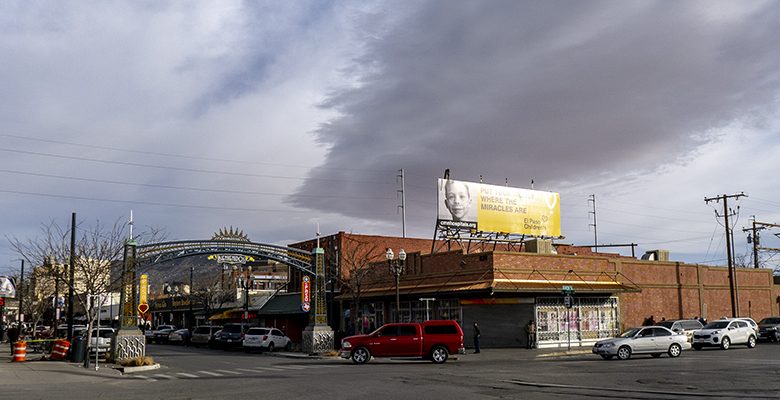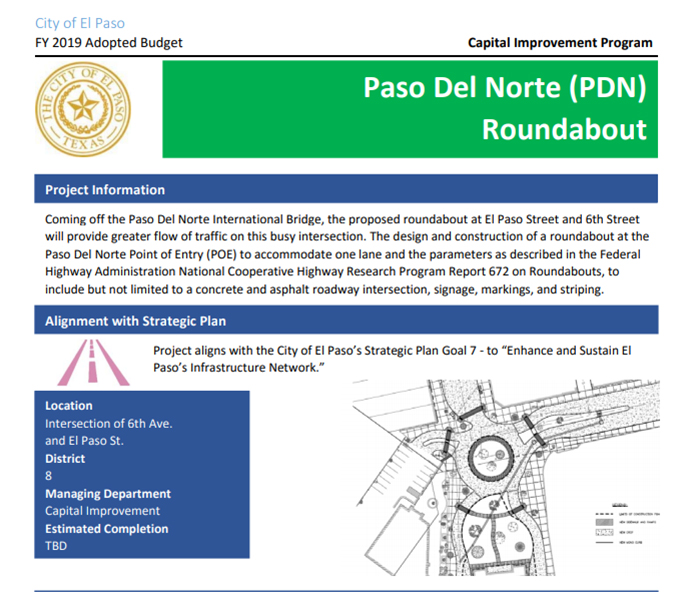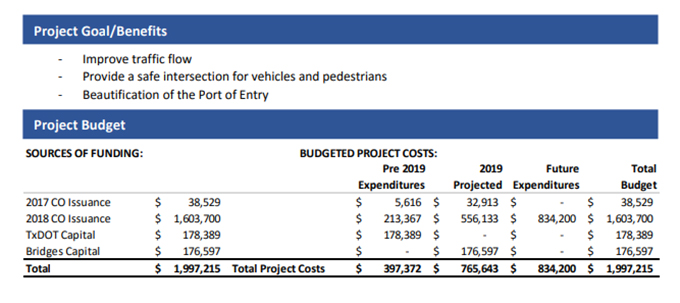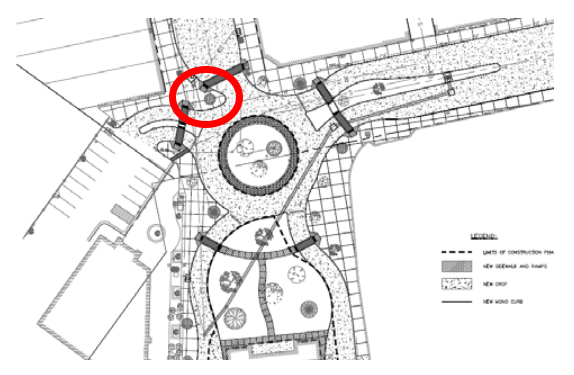If you’re selling a blind horse, the first thing you tell the mark prospective buyer is how good that horse can see.
And that’s exactly what the City did here: [http://www.elpasotexas.gov/omb/city-budget => FY19 Budget Book] on page 478 of the FY 2019 budget. (It’s page 498 in the .pdf.)
Our City Fathers want to put a roundabout on the end of South El Paso Street, right where you’re coming off the bridge.
You know, you come through Customs, and you can turn right, onto Sixth Street, toward the El Paso Los Angeles Limousine Express passenger terminal, or you can go straight down South El Paso Street. That’s where they’re putting a roundabout. Right there by the payphones and taxi stand and shoe store.
Why would they want to do it?
“Coming off the Paso Del Norte International Bridge, the proposed roundabout at El Paso Street and 6th Street will provide greater flow of traffic on this busy intersection.”
Look at the pages I lifted from the Budget:
Currently when you come out of that intersection, you have two lanes on El Paso Street. With the “new and improved” roundabout, you have one lane exiting to South El Paso Street, with an obstacle in the middle and a completely unnecessary peninsula choking off access to El Paso Street.
So restricting access to South El Paso Street from two lanes to one “will provide greater flow of traffic on this busy intersection.”
Right.
That intersection is messy now. But it works. Cars trickle out of the border security apparatus in steady drips, and go straight or turn right at five miles an hour. Whoever designed that roundabout was trying to create a bottleneck to choke traffic down onto South El Paso.
What’s that all about?
Why do they want to throttle traffic on South El Paso Street? We just dropped some serious coin to make El Paso Street look like a used car lot at a midnight sale, with that Paseo de Las Luces project. We’re paying Customs and Border Protection for extra staffing at the bridge. Why do we want to throttle traffic at that choke point?
Those people at the City are either incompetent or liars or incompetent liars.
You pick.





Serious question, Rich: Cui bono? Somebody, somehow, must stand to benefit from this birdbrain proposal.
That’s curious, John. There’s serious money at the other end of the street, where Paul Foster has the Mills Building, the Plaza Hotel, and the Centre Building (that used to be the White House). Right now El Paso Street’s connection to Mills Avenue is closed by construction, but soon it will be permanently closed when Mr. Foster puts his little private park between the Plaza Hotel and the Mills Building. So you wouldn’t think he’d be concerned about traffic.
My only guess is that the City doesn’t like having all those discount stores in downtown so they’re trying to put them out of business. Which is crazy. South El Paso Street is easily the most vibrant street in downtown El Paso. When you walk down South El Paso Street, there are actually other people walking down the street also.
But the City stopped making sense a long time ago. See, for instance, the urgency to build an arena downtown that will duplicate three other facilities in El Paso and provide no economic benefit. But at least with the arena project, one can suspect kickbacks. But the roundabout project only costs $2 million. That’s chicken feed for the thieves in City Government.
And it gets worse. With that c?u?l?t? church that bought the old Tricky Falls building, the plan to make South El Paso St an entertainment zone could get much harder. There’s that asinine rule that states alcohol can’t be sold within 300 feet of a church (as ALFC swindling people’s money is somehow holier than drinking), so that knocks out a huge chunk of the street for bars and restaurants. I would say the City should be smarter than to allow ALFC to open there, but who am I kidding – it’s the City.
But you know, Joel, the City can grant exemptions to that 300 foot rule. I wonder if they will.
Roundabouts are just the latest thing some traffic engineer at the City has come up with. Haven’t you noticed their proliferation around town, along with the addition of speed humps (that’s right; they’re no longer bumps)? This, at the same time that Mexico, which has long used them, appears to be moving away from their use.